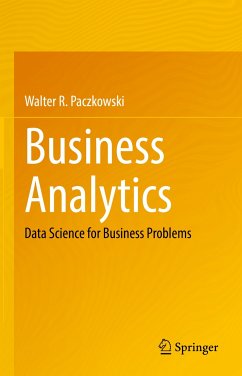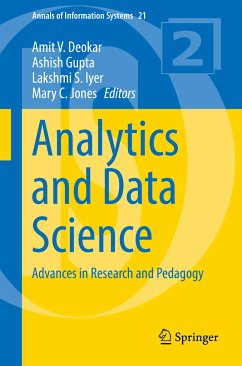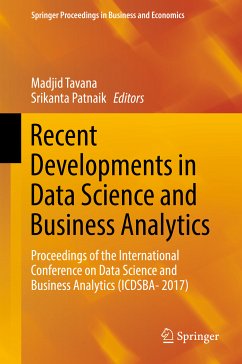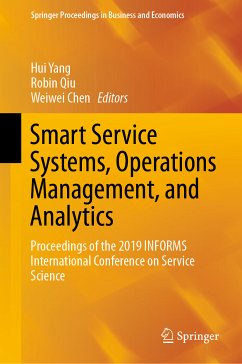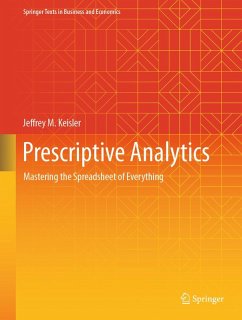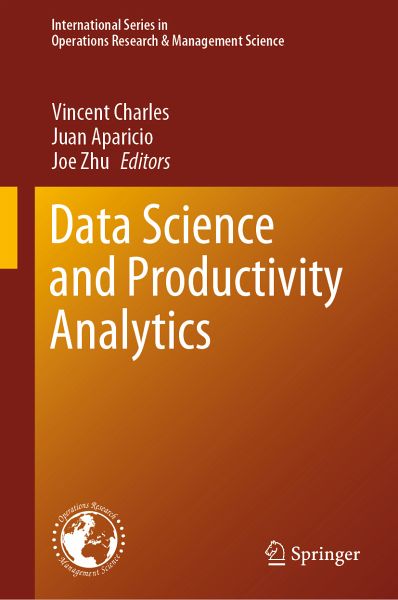
Data Science and Productivity Analytics (eBook, PDF)
Versandkostenfrei!
Sofort per Download lieferbar
112,95 €
inkl. MwSt.
Weitere Ausgaben:

PAYBACK Punkte
56 °P sammeln!
This book includes a spectrum of concepts, such as performance, productivity, operations research, econometrics, and data science, for the practically and theoretically important areas of 'productivity analysis/data envelopment analysis' and 'data science/big data'. Data science is defined as the collection of scientific methods, processes, and systems dedicated to extracting knowledge or insights from data and it develops on concepts from various domains, containing mathematics and statistical methods, operations research, machine learning, computer programming, pattern recognition, and data ...
This book includes a spectrum of concepts, such as performance, productivity, operations research, econometrics, and data science, for the practically and theoretically important areas of 'productivity analysis/data envelopment analysis' and 'data science/big data'. Data science is defined as the collection of scientific methods, processes, and systems dedicated to extracting knowledge or insights from data and it develops on concepts from various domains, containing mathematics and statistical methods, operations research, machine learning, computer programming, pattern recognition, and data visualisation, among others.
Examples of data science techniques include linear and logistic regressions, decision trees, Naïve Bayesian classifier, principal component analysis, neural networks, predictive modelling, deep learning, text analysis, survival analysis, and so on, all of which allow using the data to make more intelligent decisions. On the other hand, it is without a doubtthat nowadays the amount of data is exponentially increasing, and analysing large data sets has become a key basis of competition and innovation, underpinning new waves of productivity growth. This book aims to bring a fresh look onto the various ways that data science techniques could unleash value and drive productivity from these mountains of data.
Researchers working in productivity analysis/data envelopment analysis will benefit from learning about the tools available in data science/big data that can be used in their current research analyses and endeavours. The data scientists, on the other hand, will also get benefit from learning about the plethora of applications available in productivity analysis/data envelopment analysis.
Examples of data science techniques include linear and logistic regressions, decision trees, Naïve Bayesian classifier, principal component analysis, neural networks, predictive modelling, deep learning, text analysis, survival analysis, and so on, all of which allow using the data to make more intelligent decisions. On the other hand, it is without a doubtthat nowadays the amount of data is exponentially increasing, and analysing large data sets has become a key basis of competition and innovation, underpinning new waves of productivity growth. This book aims to bring a fresh look onto the various ways that data science techniques could unleash value and drive productivity from these mountains of data.
Researchers working in productivity analysis/data envelopment analysis will benefit from learning about the tools available in data science/big data that can be used in their current research analyses and endeavours. The data scientists, on the other hand, will also get benefit from learning about the plethora of applications available in productivity analysis/data envelopment analysis.
Dieser Download kann aus rechtlichen Gründen nur mit Rechnungsadresse in A, B, BG, CY, CZ, D, DK, EW, E, FIN, F, GR, HR, H, IRL, I, LT, L, LR, M, NL, PL, P, R, S, SLO, SK ausgeliefert werden.





